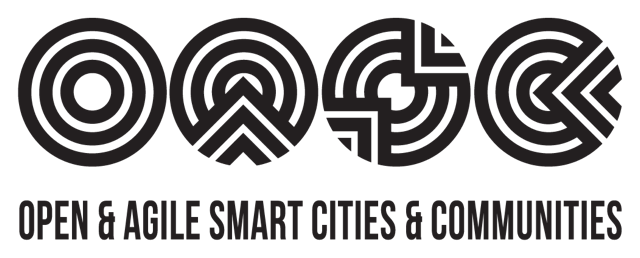Today, November 11th, is the day in COP 26 focusing on Cities, Regions and the Built Environment. Let’s remind ourselves that Climate Change is a matter of life and death. On August 9th The Intergovernmental Panel on Climate Change launched its report on the physical science basis for climate change. It said:
• This is Code Red for humanity
• Emissions of greenhouse gases and other pollutants are altering our climate
• We feel the impact now – there are multiple changes in every part of our planet
• The severity of those impacts is accelerating
• The window of opportunity to tackle these challenges is closing
The report has 4 key conclusions:
1. Human-induced climate change is already affecting many weather and climate extremes in every
region across the globe.
2. Scientists are observing changes across the whole of Earth’s climate system; in the atmosphere,
in the oceans, ice floes, and on land.
3. Many of these changes are unprecedented, and some – such as continued sea level rise – are
already ‘irreversible’ for centuries to millennia, ahead.
4. But there is still time to limit climate change. Strong and sustained reductions in emissions of
carbon dioxide and other greenhouse gases, could quickly make air quality better, and in 20 to
30 years global temperatures could stabilize.
In introducing the report, the UN Secretary-General António Guterres “The alarm bells are
deafening, and the evidence is irrefutable”. He reminded us that, while there is still time, it requires us to “respond to this crisis with solidarity and courage”. And that we need credible, concrete, and enhanced Nationally Determined Contributions that lay out detailed steps for action.
The role of cities
Cities and communities are key to a net-zero emissions future. More than 50% of the world’s population currently lives in cities, and that figure is expected to increase to almost 70% by 2050. Cities generate around 70% of global carbon dioxide emissions. Cities are also a global economic engine, responsible for 80% of global GDP, and represent a major opportunity to accelerate progress towards ambitious climate goals. These factors make the decarbonisation of cities a global priority and of special significance to achieving national commitments and objectives.
The key issues
As we think about how to achieve Net Zero in our cities, we need to address the two key areas of:
- Reducing Energy use; and
- Reducing embodied carbon in the built environment and in the food and goods we consume
And, in both these areas there is the challenge of how to manage the transition from where we are now to where we need to be.
This will require very significant changes in the way cities are managed, in the systems that support
city services and of the lifestyles of our citizens. And, it has to be done very quickly.
We know what is needed – we just don’t know quite how to do it
While we have known about the challenge of Climate Change for many years, it is only very recently
that governments, and business around the world are starting to put major efforts into developing
solutions. There are many ideas, and many small-scale pilots, but there are few solutions that have
been tried and tested at scale.
It is also very complicated because we need to tackle many different issues at the same time, and we
need to ensure that in getting to net zero in one aspect of the city we don’t increase carbon
emissions in another.
We have very little time to learn. We need to put these solutions to work at wide scale within the
next twenty to thirty years.
That means that we have to learn together and share our knowledge quickly around the globe.
Developing data handling tools to underpin joint learning
The model for how we need to live and how we need to manage our infrastructure in the future is
going to be very different to the one we are using today – so there is the need of a complete rethink.
To plan and implement these new ways of living, we need to develop new ways for modelling the
options for achieving Net Zero to ensure that we are making the best decision overall. For instance,
to have buildings that are most sustainable in terms of energy use, we would need to demolish
existing buildings and build everything anew to the highest sustainability ratings, but this would
result in significant embodied carbon use. Would refurbishing existing buildings be better, or do we
need to invest for the long term? What about how to decide the most appropriate form of local
renewable energy? What are the most appropriate boundaries for local energy districts to enable
the easiest management of the balance between supply and demand? There are many key questions
where only sophisticated modelling can supply the answers.
To enable all of this, the city also needs to greatly enhance its capability to gather and analyse local
data through extensive use of IoT networks, developing a comprehensive local data ecosystem, and
building and using sophisticated digital twins.
And that means that we need to work together to develop new standards and Mechanisms for all of
these.
Conclusions
We are facing a life-or-death struggle for the future of this planet and for the future of humanity.
This is a struggle that we here need to win. We can’t leave it to future generations as we need to
take the key steps within the next twenty to thirty years.
We can only win this struggle by working together. This is not a matter of national pride or political
rivalries. If my country succeeds in the road to net zero, but another country fails, then my country
too will experience the consequences of that country’s failure.
This is where Open and Agile Smart Cities has an important role to play. We need to grow and
include many other cities in our network. And we need to find ever more effective ways of learning
from each other to develop MIMs and other tools and then share our knowledge with the world.
Let us all continue to work together as we follow the road to Net Zero.
Michael Mulquin
OASC, MIMs ambassador

